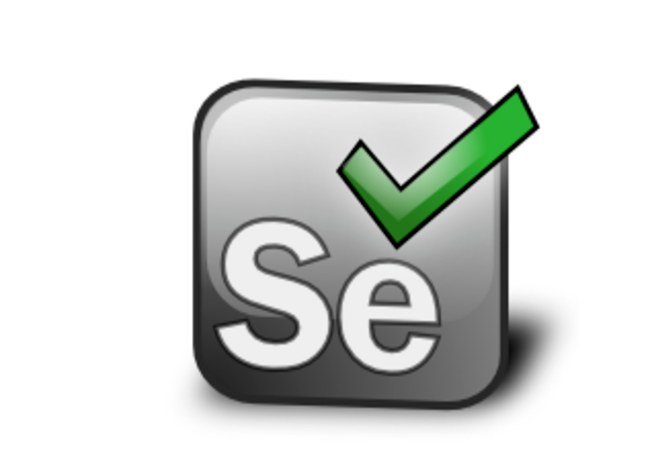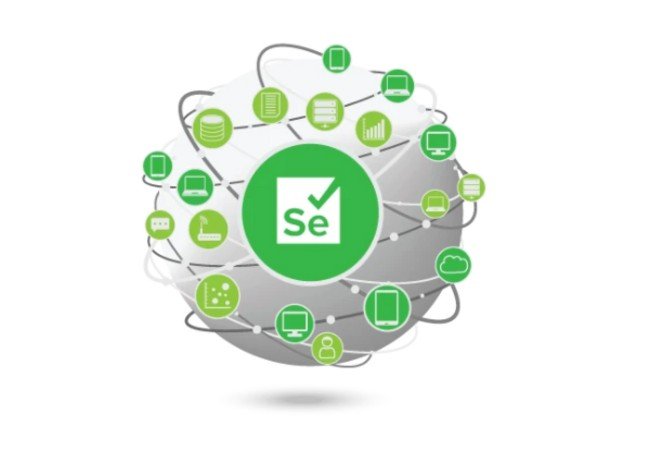Selenium is such an open-source tool that automates any web browser. This tool is providing a single interface for the users in any programming language.
A complete overview of Serelium:
When we are working on a project, and we are spending our time making this assignment and project perfect and functional, we make sure this again and again. And if any web developer or designer is spending countless hours testing a web app and web page to make sure it is functional in and then outside the local development environment area of this web page. Nowadays, the developer has some special advantages, and they depend on the size of the manual testing team and manual testing system. And also need an end-to-end system to test, and they could take anyplace between days to weeks to run its subject or web app.
Today’s methodologies:
When we are talking about the latest testing method and checking any framework or system, we should talk about Serelium. Due to this latest method, the developer gets the latest development method and its methodologies to work in a significantly shorter time than before. Their framework works are spending two to four weeks on any project. The developer can get access to shipping new products and bug-free releases, which requires deterministic, repeatable testing that provides immediate and instant feedback.
What is Selenium?
Selenium is such an open-source tool that automates any web browser. And this tool is also providing a single interface for the users that lets any of us to write test scripts in any programming language like Ruby, Java, NodeJS, PHP, Perl, Python, and C#, among many others. Any of browser-driver then in executing these scripts on a browser-instance on user’s device.
Note of serelium:
Suppose any of us wants to start and get started with this tools system and its latest version, Web Driver-based implementation. And any of user will only need a single selenium jar file for (selenium-standalone-server-‘{‘version’}’.jar) to run their tests both locally and also on remote devices easily. This JAR file also contains W3C-standard Web Driver and API and Selenium Grid, along with Selenium Server (for both existing users of deprecating and Selenium RC implementation).
Selenium Web Driver:
In this section, we discuss these tools and their API file. The user and developer, also known as Selenium 2.0, WebDriver, can be executed to test the scripts through browser-specific drivers. And they consist of the following:
What do you know about API?

API stands for Application Programming Interface. And it consists of port testing scripts, and these scripts are written by the developer and these scripts are written in a different programming language like Ruby, Java, Python, or C# to Selenese. It has its own programming language, though.
Serelium Library:
We are talking about the houses and their API and their language-specific, which is bindings. Although, many of third-party and its bindings exist to support any programming language. And though, the core client-side of the bindings which are supported by the main project is following here: Selenium Java (as selenium jar files), Selenium Ruby, Sereliumdotnet (or Selenium C#, available as .dll files), Selenium Python, and Selenium JavaScript (Node).
Driver:
The executable module and files that open up on a browser are installed and running on the test script. And the browser-specific which will be, for example, Google developers and they are maintaining Chrome driver for Selenium to support automation on Chrome browser easily.
Framework:
The frameworks are such types of libraries that are used for integration with natural way or programming language testing frameworks. They are like to Serelium with Cucumber or Selenium with TestNG.
We are presenting here a detailed tutorial on Selenium and all about their Web driver.
How are web drivers working?
The WebDrive are such a type of protocol, and they have a local end (‘client’) which is sending the commands and (test script) to a browser-specific driver.
The driver is also executing these commands on its web driver’s browser instance. So, if any developer and user have a test script and they are calls for executing on Chrome and Firefox, then they are Chrome Driver will execute the test on Chrome; the GeckoDriver will do the same on Firefox seamlessly.
Note:
Testing of scripts can be executed only when the WebDriver’s client and their browser/driver are connecting. They do not have the option to be on the same device or same system as well. To enable this testing execution on multiple remote drivers, the user or consumer also need any RemoteWebDriver and the Grid system.
What do you know by Selenium Grid?
The Grid is known as minimizing test and its runtime, and this is given by executing with multiple tests and its scripts on any number of giving remote devices at once. This is also known as parallel testing.
Serelium Grid is a type of smart server that is routing tests and commands to browser instances on different remote devices.
Two main components:
There are mentions two main components which are needed for this other than test script from client-side and tester are:
The ‘Hub’ server:
The hub server is playing the role of accepting the access and requests from the WebDriver client. The routes JSON test can have the commands to remote drivers on registering ‘nodes’.
‘Node’ (remote devices):
This contains a native OS, browsers, and remote web driver.
How it works:
WebDriver and The client-side can execute the test faraway with all devices through a remote web driver. RemoteWebDriver is a type of device that is like the user’s regular WebDriver, except its two components, called the Client (your test script) and Server (a Java servlet that actually works executes the test on the remote device).
In your test script and Javascript, the user can define the ‘desired with capabilities’ (device, platform, browser, etc.) of the node where the test will work.
The Hub is receiving this Java script, and it is running through the registering nodes to find one that matches with the desiring capabilities, and then this hub is assigning the test to it for execution time.
Note: The user can set up the desired Grid, and it is pretty easy, but scaling, configuring, and maintaining of all kinds of its integrity can take up a lot of resources of javascript. The user can make sure to adopt all of its maintenance after careful pondering.
What do you know about Selenium IDE?

Serelium IDE is such type of a Google Chrome and some kind of Firefox plugins that can log into ‘natural’ interactions in the specified browser and then it is generating of its code in all programming languages like C#, Java, Python, and Ruby as well as Selenese IDE which is its own scripting language.
Testing IDE:
Testers and developers can enable the ‘recording’ within the IDE, and then he can ‘play out the test with all scenarios on a certain browser. The IDE can also replay these interactions and highlight all types of errors that can be (during replay) in red in chrome.
The user can keep in mind that while the plugins have quick and helpful for those interactions, these code generating is gradually too messy to be used in the automation of all test scripts.
So if any user or developer is using it for fast prototyping, then the developer has some kind of serious cross. Then the developer can do browser testing, and we are recommending this WebDriver.
Serelium can be easily deployed on this kind of platforms such as Windows, Linux, Solaris and Macintosh. Although, it supports OS (Operating System) using for mobile applications like iOS, windows system mobile and android system.
Programming language:
This can support a variety of programming languages by using drivers specific to each language. Languages supported by this include C#, Java, Perl, PHP, Python and Ruby. Presently, this Web driver is the most type of popular language with Java and C#. It can test all types of scripts that can be coded in any of the supported and programming languages, and then it can be run directly in most modern web browsers. Browsers of all kinds supported by this, including Internet Explorer (IR), Mozilla Firefox, Google Chrome, and Safari.
This can be used to automate with functional tests, and then it can be integrated with some of automation test tools such as Maven, Jenkins, & Docker to achieve all continuous testing. This can also be integrated with all tools such as TestNG & JUnit to manage all types of test cases, generating reports.
Automation Tools:
1: Automation testing tools that can be used for some functional automation mentioned here:
2: The developer can do a quick Test Professional provided by HP.
3: The developer can also give some Rational Robots, and IBM provides them.
4: They also provide some coded UI, and Microsoft provides them.
5: They have open source.
6: They are auto-it and open source.
Automation testing tools features:
The feature of all automation testing tools is used for non-functional automation.
They have Load Runner, and HP provides them.
They have JMeter, and Apache provides it.
Automation tools of Burp Suite and they provided by PortSwigger.
Acunetix are providing by Acunetix.
Why Automated Testing is necessary, and what are its advantages?
There are some advantages of automated testing are mentioned here:
Automated testing tools can playback and pre-recording, which pre-defined actions and features.
This Automation testing supports of frequent and regression of this testing system.
It is also providing rapid feedback to all languages of developers.
Also, It is providing with unlimited iterations of testing cases and execution systems.
It is providing with disciplined and documentation of testing cases of programming language.
These automated testing generated with customized defects and reports.
The user or developer can have fewer errors, and it is prone as compared to manual testing of languages.
Selenium Features:

Some of Serelium features are mentioned here:
It is an open-source and portable Web testing Framework.
This IDE also provides playback and then recording of features for authoring tests without the developer’s need to learn a testing scripting language.
It can support many types of operating systems, browsers, and some of the programming languages, and these are:
Programming Languages: C#, Java, Python, PHP, Ruby, Perl, and JavaScript
Operating Systems mentioned here like android, iOS, Windows, Linux, Mac, Solaris.
Browsers related to this Google Chrome, Mozilla Firefox, Internet Explorer, Edge, Opera and Safari, etc.
It is also supportive of parallel tests, and then it has some of the execution, which reduces time and increases the efficiency of all tests.
This can integrated with all frameworks like Ant and Maven for source code collection.
This can also be done, and it is integrating with tested frameworks like TestNG for doing application testing and generating many reports.
This also requires some of the resources, and they compared to other automation testing tools.
Selenium Tool Suite
This is not just a single tool or component, but it is a special type of software suite with many approaches to supporting automation testing. This can be comprised of four major components, which are included here:
It has an Integrated Development Environment (IDE).
This has some Remote Control (Now Deprecating)
It has some of WebDriver and Selenium Grid.
Serelium IDE-Features
It is also divided into different components, each having its own features and functions. The developer has some of categorized with seven different components of such as and they are following here:
Menu Bar
Tool Bar
Address Bar
Test Case Pane
Test Script Editor Box
Start Recording Button and
Reference Pane
Frequently asked questions (FAQs)
1: What are the names of browsers which the Web driver supports?
Ans: Some of the important browsers are here, and they are Internet explorer, firefox, safari, chrome and opera supported by web drivers.
2: Is it true that if an object is identified using XPath?
Ans. Yes.
3: Can we do the program with a web driver in any other language than Javascript?
Ans. Yes, these supported by various programming languages like C#, Ruby, Perl, Python.
The final words:
Serelium is such a type of framework consisting of a set of tools. And these tools written with many programming languages.




